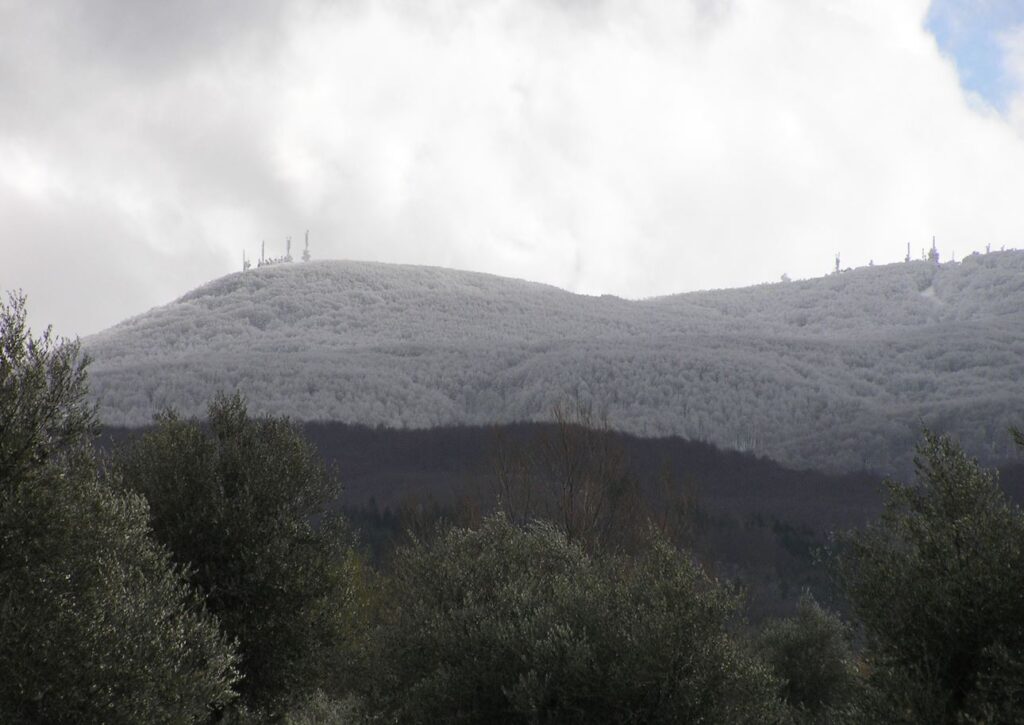Questo articolo è disponibile anche in:
![]() Français
Français ![]() Deutsch
Deutsch ![]() Español
Español ![]() Italiano
Italiano
Upper between 400,000 and 200,000 years ago. It is located in the southern part of the region, in Maremma, and is visible from a great distance. For example, on clear days, it is clearly visible from the Florentine Chianti which is about 80 km as the crow flies. The mountain rises to 1,738 meters above sea level and is heavily forested. Monte Amiata is an important center for winter skiing and summer holidays, in fact it has 15 ski lifts and an extensive network of trails.
AN ANCIENT VOLCANO
The main centers of the Amiata area are Abbadia San Salvatore, Piancastagnaio, Arcidosso, Castel del Piano, Vivo d’Orcia and Santa Fiora. They all arose in the Middle Ages, when the area was largely under the feudal dominion of the Aldobrandeschi. Then, starting from the XII-XIII century, the feudal domain crumbled and the area became part of the Republic of Siena, and then from the mid-sixteenth century of the Grand Duchy of Tuscany.

Monte Amiata is an important tourist destination. In the winter months the main attraction are the ski slopes, while in the summer months the localities around the mountain become renowned summer resorts. Around the volcano are the medieval towns of Castel del Piano, Piancastagnaio, Abbadia San Salvatore, Arcidosso, Castell’Azzara, Seggiano, Montelaterone, Santa Fiora, Campiglia d’Orcia and Vivo d’Orcia.
The Monte Amiata area was famous for its cinnabar mines (from which mercury was extracted) which for a long time in the 1900s were among the most important in the world. In the territory of Monte Amiata there are several protected nature reserves. Like the nature reserves of Monte Labbro, Monte Penna, Poggio all’Olmo, Pescinello, Bosco dei Rocconi, the Santissima Trinità. On the slopes of the mountain there is also the wildlife park of Monte Amiata where animals such as wolves, fallow deer, deer, roe deer, mouflon and chamois live.
Questo articolo è disponibile anche in:
![]() Français
Français ![]() Deutsch
Deutsch ![]() Español
Español ![]() Italiano
Italiano

